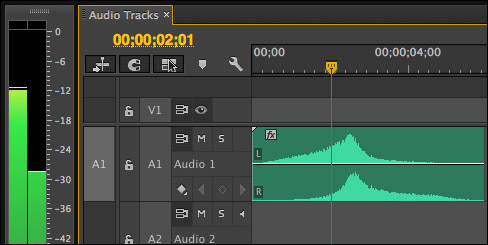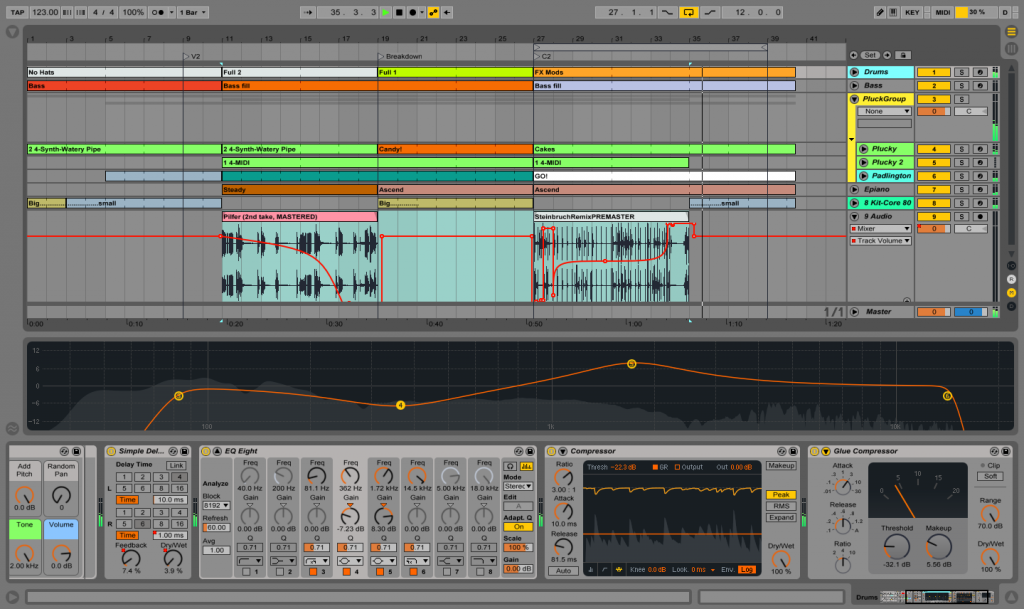Harmonizing Audio and Visuals: Mastering Music Composition for Video Production
Choosing the Right Music for Your Video
When adding music to your videos, one must consider a few more criteria than when just dealing with audio.
Music sets the tone and either complements or detracts from the visual story being told.
It’s not only an enhancement but a powerful narrative tool that can alter viewer perception and emotion.
Table of Contents
The Importance of Audio Elements in Video
Your video is likely to already have audio of some form attached, whether it be speech, ambient audio, or both.
This existing audio layer sets a foundation, and any additional music must be thoughtfully integrated to enhance, rather than overshadow, the original soundscape.
The dialogue, environmental sounds, and music must work in concert to create an immersive experience.
Matching Music with Video Content
It’s crucial to not only consider the genre of the music but also its tempo, instrumentation, and dynamics to ensure they align with the visual content.
The music should underscore the narrative arc, reflecting any shifts in tone or action without overwhelming them.
Selecting Music to Complement Visuals
You want to pick or score a composition that meshes well with what the viewer is seeing.
The visuals may call for a symphonic piece to elevate an epic moment or a simple acoustic melody to underscore a personal story.
Think about how the music will interact with the color grading, pacing, and transitions of your video.
The Impact of the Right Musical Choice
Whichever category your video is in, having the right music in place can add that special touch to an already solid visual element.
It’s the glue that binds the story elements together, and often the last piece of the puzzle that turns a good video into a great one.
Music can subconsciously steer the emotional journey of the audience throughout the video.
Audio Integration: Mixing Music into Your Video
Mixing your music into your video again follows a slightly different process than just working with audio.
The integration must be seamless, ensuring the music complements the visual cues and enhances the viewer’s experience.
It’s about finding a balance that the music supports without stealing the spotlight.
Balancing Music in the Audio Mix
It is very important to have the music “sit” in the right position in your mix; this means that the volume and spatial configuration of your sounds should be balanced and not fight with any other sounds, especially voices, that might be happening.
The music should not distract from the dialogue but rather fill the spaces in between, adding depth and emotion to the spoken words.
Techniques for a Clean Audio Mix
It is a good idea to not mix too loud initially, but for particularly dense musical compositions, one could adjust the volume to compensate or even change where the music is in the stereo mix.
This careful manipulation of volume and stereo placement ensures clarity and helps maintain focus where it is needed most.
Spatial Configuration of Sound
Panning an audio element further to the left or right of the stereo field is a useful technique to give a sound it’s own space and prevent it from clashing with other sounds in the mix.
This approach can be especially effective in creating a more dynamic soundscape, where every element can be distinctly heard and appreciated.
Effective Use of Panning
When one doesn’t have too many tracks, it’s a good idea to pan them to different spaces in the stereo field; this will bring a cleaner final mix and, depending on the content, could add an extra dimension of believability to your audio.
It’s also an artistic choice that can bring a static image to life, making the audio environment as three-dimensional as the visual.
Appropriate Use of Music in Video
It is important to remember that while music is a great tool for bringing out expression and emotion in your content, it is not good to overuse it or place music in inappropriate settings or with irrelevant themes to your content.
Music that is mismatched with the video content can be jarring and confusing, pulling the audience out of the experience rather than drawing them in.
The Consequences of Misused Music
This can detract from your video, even distract from the message, or cause it to be misinterpreted entirely. The choice of music can alter the intended tone of the video, making serious content seem trivial or light-hearted scenes seem overly dramatic.
It’s a balancing act that requires a keen understanding of both the music and the message.
The Art of Music in Video Production
When used judiciously and with good practices, music can add that final missing touch to your videos and help them take your viewers exactly where you want them to go.
The right soundtrack can transform a simple message into a compelling story, and turn viewers into followers, customers, or fans.
It’s the heartbeat of the video, often remembered long after the visuals fade.
Frequently Asked Questions
How can music enhance the narrative of a video?
Music enhances the narrative of a video by setting the tone, complementing the visuals, and guiding the emotional journey of the audience.
The right soundtrack can underscore dramatic moments, build tension, or evoke specific emotions, making the story more compelling. By carefully matching the tempo, instrumentation, and dynamics of the music to the visual content, creators can create a harmonious experience that resonates with viewers.
This integration transforms a simple message into a powerful story, ensuring that the audience remains engaged and emotionally invested throughout the video.
What factors should be considered when selecting music for a video?
When selecting music for a video, several factors should be considered to ensure it complements the visuals.
First, consider the genre and mood of the music to match the video’s theme and narrative arc. The tempo and rhythm should align with the pacing of the video, enhancing transitions and key moments.
Additionally, the instrumentation and dynamics of the music should reflect the visual content, whether it’s an epic scene requiring a symphonic piece or a personal story needing a simple acoustic melody.
Finally, it’s essential to ensure that the music does not overshadow dialogue or important audio elements, maintaining a balance that supports the overall message.
How do you integrate music into a video without overshadowing the original audio?
Integrating music into a video without overshadowing the original audio requires careful balancing and mixing.
Start by ensuring that the volume of the music is appropriately set so it complements rather than competes with dialogue or ambient sounds.
Use techniques such as panning and adjusting the stereo field to give each audio element its own space. This spatial configuration helps create a clean mix where all sounds can be distinctly heard.
Additionally, consider the dynamics of the music, using softer passages during dialogue-heavy scenes and saving more intense musical moments for visual highlights.
This thoughtful integration ensures a harmonious audio-visual experience.
What are some effective techniques for mixing audio in video production?
Effective techniques for mixing audio in video production include volume balancing, panning, and using the stereo field strategically.
Volume balancing ensures that no single audio element, such as music or dialogue, overpowers the others.
Panning allows you to position sounds in the left or right channels, creating a more dynamic and three-dimensional soundscape.
Adjusting the stereo field helps in placing audio elements in different spatial locations, preventing them from clashing.
Additionally, using equalization (EQ) to adjust frequencies can help clarify individual sounds. These techniques collectively contribute to a clean, immersive mix that enhances the viewer’s experience.
Why is it important to match the music to the video’s visual content?
Matching the music to the video’s visual content is crucial because it ensures a cohesive and immersive experience for the viewer.
Music that aligns with the visuals helps to reinforce the narrative, making the story more engaging and emotionally impactful. Conversely, mismatched music can be jarring and distracting, pulling the audience out of the experience and potentially altering the intended message.
By carefully selecting music that complements the tone, pacing, and mood of the visuals, creators can create a seamless blend of audio and video that captivates and resonates with the audience, enhancing the overall effectiveness of the video.
Share:
Search our blog:
Follow us on:


